Limoges China is one of the most admired and valued decorative art. This sophisticated and stylish piece of art emerged from France and is a favorite among porcelain makers. Limoges doesn’t refer to a single maker only but to the various factories (hard-paste) that operated successfully in the designated town several centuries ago.
Limoges China patterns are famous because they come in various designs, not to mention the versatility in their pairings. To date, collectors still seek this coveted, exquisite piece of art.
But how do you identify Limoges China?
This article expounds on the identification of Limoges China and how to distinguish between genuine and fake Limoges China marks.
Table of Contents
History of Limoges China
Limoges china has been in existence since the late 18th century.
The region’s history changed upon the discovery of kaolin clay. This crucial ingredient for making porcelain was a worthwhile discovery.
Kaolin clay requires firing at very high temperatures to produce a luminous finish. As soon as it was discovered, small porcelain-making factories emerged within the area, capitalizing on the availability of this prized clay.
The arrival of King Louis XIV of France
In 1781, King Louis XIV of France arrived in the area. He bought one of these local porcelain factories to allow him to produce porcelain items for his court. This mere act propelled Limoges china porcelain’s admiration and high rating.
As time went by, factories in the Limoges area multiplied such that the area was attracting international clients by the 19th century.
Interestingly, Haviland Porcelain, one of the porcelain factories that opened near Limoges in the early 1840s, garnered recognition from the office of the President of the United States. Thanks to its wares exhibiting refinement and luxury in official settings, the company became the chief porcelain supplier to this office.
The 1925 Paris International Exhibition of Decorative Art
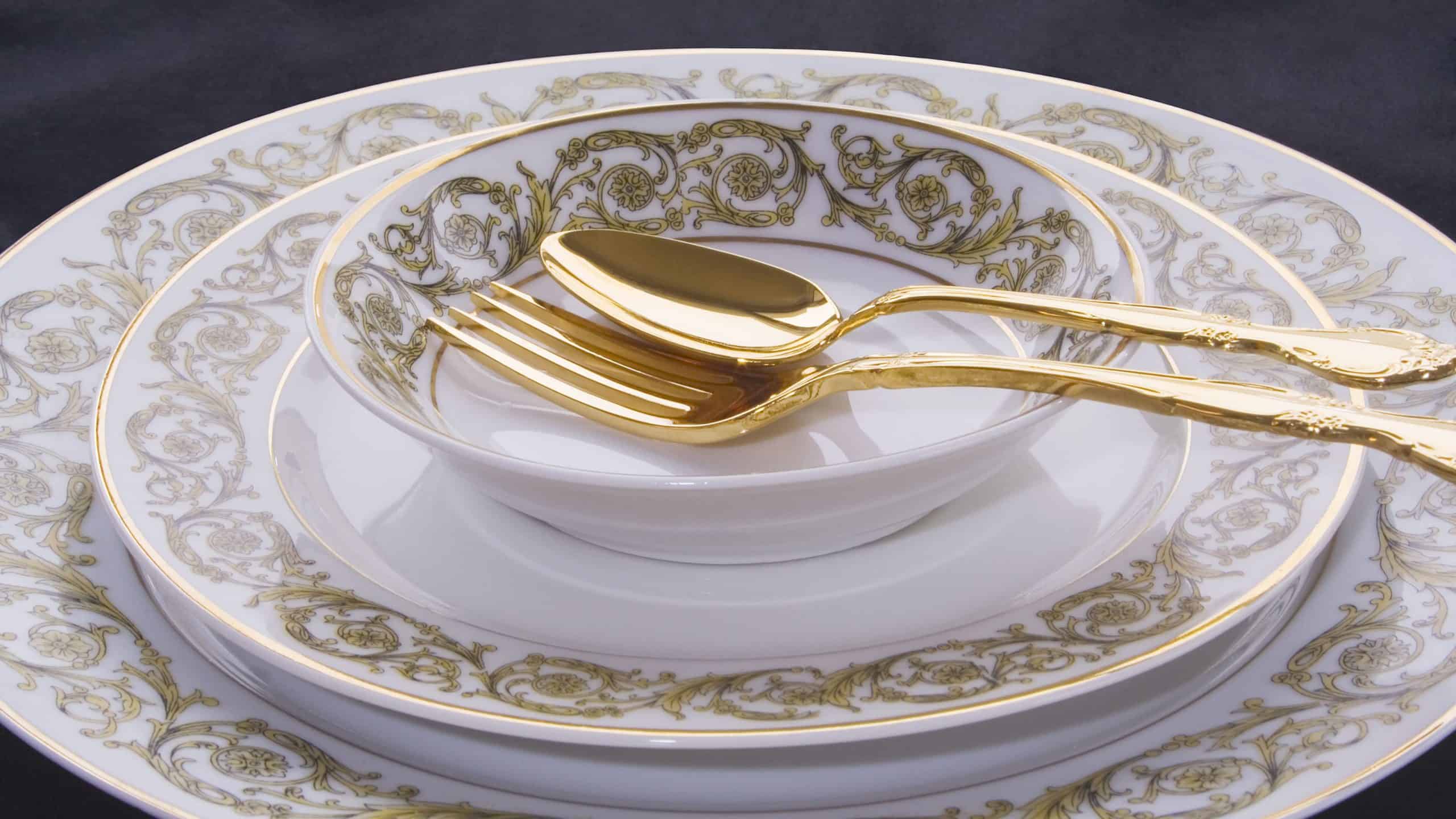
There were new developments in 1925.
Limoges china pieces appeared in the 1925 Paris International Exhibition of Decorative Art, boosting the popularity of the pieces.
And with the acceptance of Limoges wares among locals and internationally, the region secured its status among porcelain production greats.
Limoges China Today
Today, the Limoges region remains a well-known porcelain production area, vibrant with expert and quality ware craftmanship.
Limoges has also received international recognition as a center for ceramics production. It continues to advance designs in the porcelain world through fruitful collaboration with highly qualified artists and designers.
The transformation of elegant porcelain pieces has seen the unmatched hand-paint works of Franz Bischoff, an Australian-American artist, among other great producers, including Yayoi Kusama and Jeff Koons. These gentlemen were pivotal in designing porcelain wares and ensuring Limoges remained relevant throughout the years.
Of course, Limoges china pieces vary in value depending on the specific quality of the ware and its rarity.
Are Limoges China Always Marked?
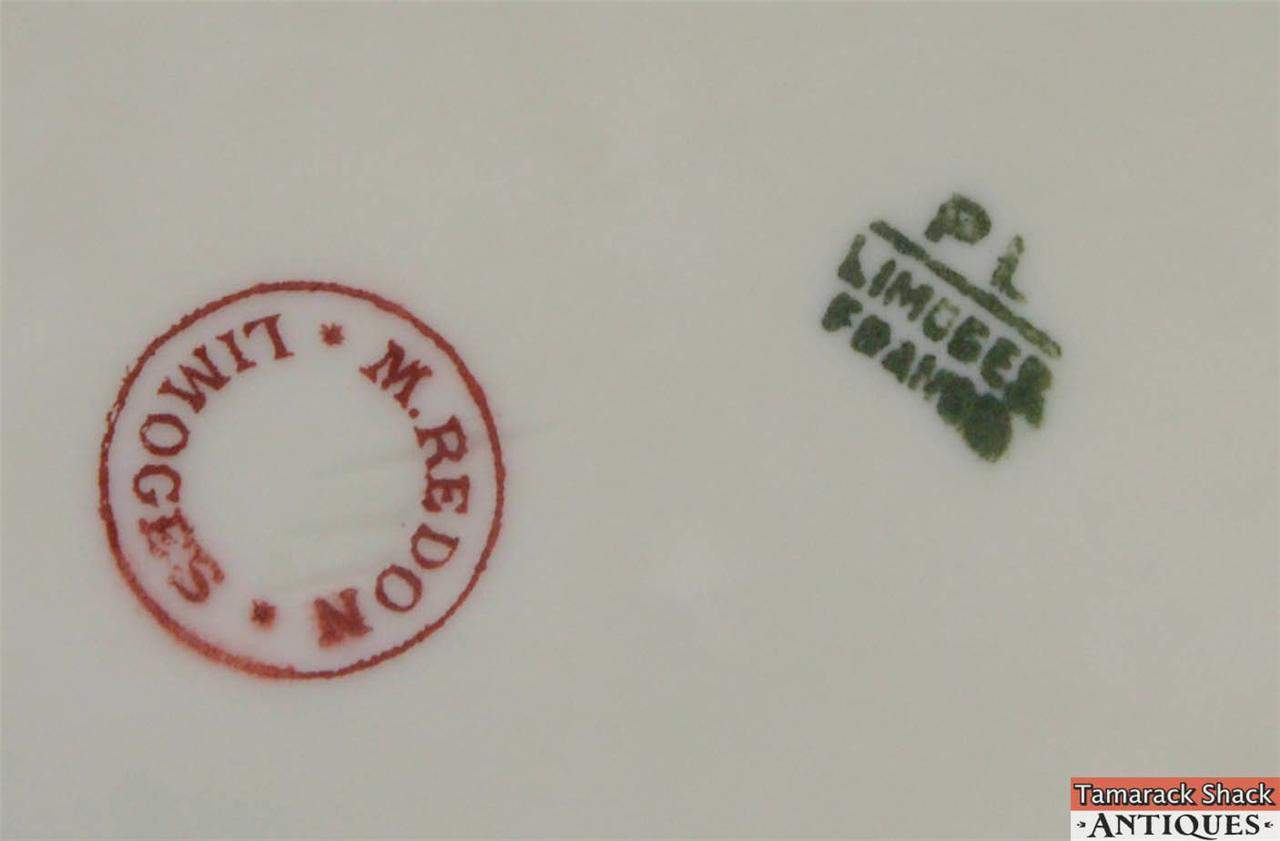
Limoges china pieces are always marked. However, be wary of the markings because many are out to imitate just about every authentic piece. For instance, if you come across a porcelain ware marked as Limoges and made in China, it’s counterfeit.
Authentic Limoges pieces are crafted, hand-painted, and hinged (finished) in Limoges, France. Any other item is a counterfeit.
The most common identification mark for a Limoges china is the factory stamp. Usually, it appears at the bottom of the porcelain ware, ‘Limoge’, and is hand-painted.
The name ‘Limoges’ or the letter ‘L’ should feature on all Limoges china. Other Identification marks you might find in a porcelain piece include:
- The manufacturer’s name
- The company’s trademark
- The artist’s name
How to Identify Limoges China
Identifying Limoges china is not complicated. You only need to search for marks on and beneath the glaze to determine its country of origin and factory marks like AE, H& CO/L, and GDA.
Also, look for tiny pictograms and prints on your ware, plus any family colors and names to mark the items.
Check for marks beneath the glaze on the whiteware. Usually, these are put in place before painting or glazing the piece.
Note that these marks are often clearer than those positioned on the glaze. While the producer placed the former mark, the latter were stamped by decorators, importers, and retailers. They simply imprinted their names at the bottom of the wares.
What If France is Mentioned as the Country of Origin?
Sometimes, you’ll find a piece with France indicated as the country of origin. In that case, the item was made and subsequently exported post-1891.
Use a magnifying glass to spot the tiny pictographs and prints for such an item.
An example is a star printed in a circle around the word Limoges, a crown featuring a royal cypher, and France as the underscored word.
Factory Marks
Several factories make Limoges pieces.
For Limoges china items, expect factory marks like GDA, Porcelaine, CO/L, Haviland & Co. Limoges, H & CO, and Theodore Haviland, Limoges, France. These were manufactured toward the beginning of 1898.
On the other hand, if you find a piece with the factory mark AE, that particular item was made between 1797 and 1868 in the Allund factory.
If an item features the CHF, CH Field Haviland Limoges, and CHF/GDM marks, it was made in a Haviland-owned factory between 1868 and 1898.
If you spot a family name on porcelain ware, the Limoges china item was made by a family-run factory or one operated by a small artisan.
A good example is in names like C. Ahrenfelst and A. Lanternier, Elite France, and M. Redon. Between 1900 and 1914, Elite Mark’s name appeared in red, while it changed to green from 1920 to 1932.
Limoges China Patterns and Values
Patterns
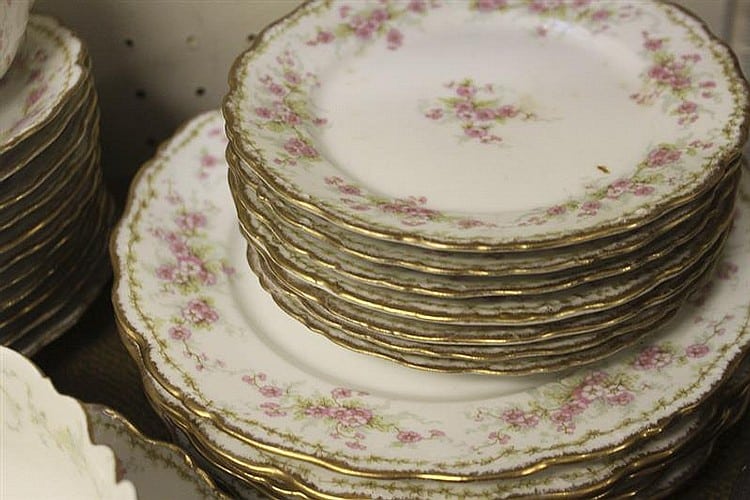
There are 30,000 to 60,000 Limoges china patterns made by Haviland in its four factories.
Some examples of valuable Limoges china patterns include:
- Drop Rose
- Old Apple Blossom
- Harrison Rose
- Old Autumn Leaf
- Saint Germaine
Arlene Schleiger classifies these patterns by the largest creator (Haviland) numerically in her books on Limoges china patterns.
In fact, dealers today use this numerical system based on Haviland patterns when trading Limoges china. Schleiger assigns each pattern a unique number that you can use to search for your desirable pater in marketplaces.
Value Guide
Collectors and savvy dealers make some considerations when valuing Limoges china. Of course, top-notch beautifications featuring skillful and finely detailed hand painting rank higher in value.
At the same time, a piece signed by a renowned or notable artist is also highly desirable.
Hand-decorated Limoges china is desirable and of high value than those decorated with transfers.
However, there are still hand-decorated items with poorly executed paintings, which reduces their value. These are often Limoges china worked on by amateur painters instead of more proficient porcelain artists or the factory.
The Limoges China condition also plays a significant part in determining its value. A Limoges piece without any notable crack, chip, or damage is highly valued.
Fake Limoges China Marks
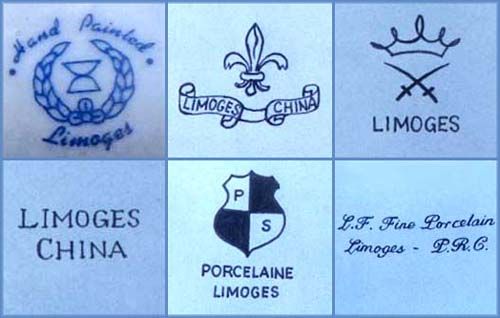
There is fake Limoges china. It’s possible to come across a counterfeit in the market.
Here’s how to tell. An authentic piece comes with the factory stamp at its bottom, painted by hand. This is the identification mark to check for when trying to spot fake Limoges china marks.
However, it’s not as easy as it sounds. It’s recommended that you familiarize yourself with some tricks, rules, and safety hacks to ensure you can spot fake Limoges china marks flawlessly on your dinner plates or serving dishes.
Steps to Follow in Spotting Fake Limoges China Marks
Here’s how to spot fake Limoges china marks:
- Keenly observe the porcelain piece you intend to examine using a magnifying glass. An authentic item would have well-planned earmarks throughout. On the other hand, fakes feature carelessly done decorations.
- Take the porcelain serving dish or other ware in your hands and feel its weight. A genuine piece should not feel too heavy for its specific length.
- Now turn it around to examine the ‘Limoges’ mark on its back. Often, counterfeit pieces come with the phrase Limoges spelled incorrectly. Often, they’ll write it as Limogee or Aimoges. This mark is written with a particular textual style, making it difficult to spot the incorrect composition unless you carefully examine the piece.
- Next, examine any gold trim. If it appears sparkling and brilliant, it’s likely not authentic. Genuine Limoges wares feature a recognizable patina.
- Analyze the creation of the porcelain item. If it doesn’t appear even, then it’s a counterfeit. For example, a tea set ought to have its handles coordinating impeccably.
Final Thoughts
Antique collectors rank Limoges china highly, and a Limoges mark on a Limoges porcelain ware is known to them as a definition of quality. There’s no doubt Limoge china is the finest hard-paste porcelain worldwide, making it a perennial favorite of collectors and antique appraisers.
Limoges china has unique characteristics, including attention to detail, popular trends in art and design, and superb craftsmanship. Whether you’re a fan of classical or contemporary form, Limoges china offers a style for all.
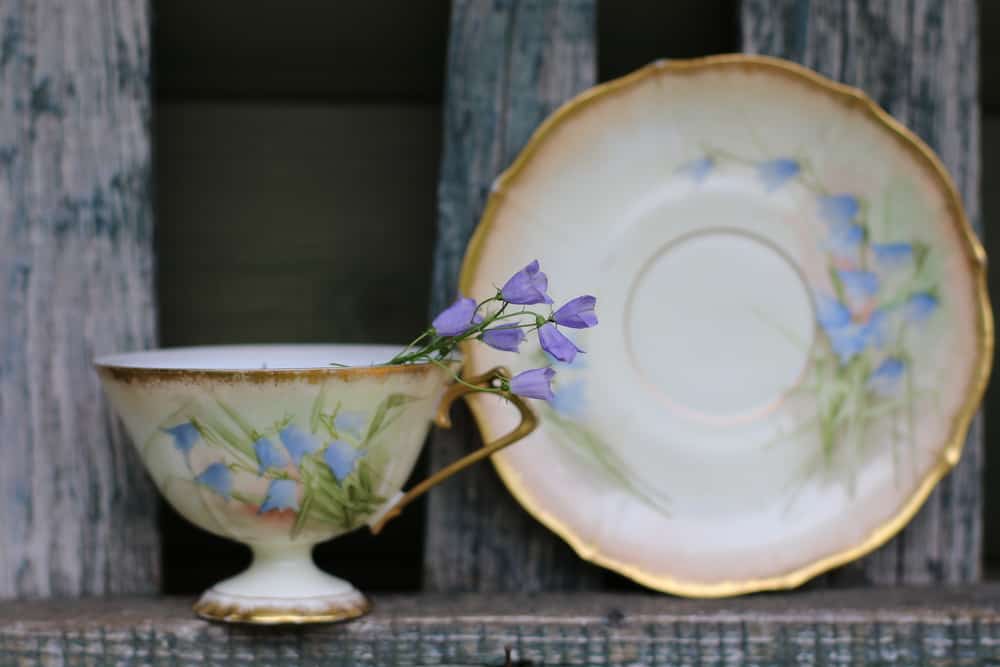
I just bought a limoges set and I’m trying to get it appraised
I have a large Limgoes set that I acquired from an elderly woman. It is an off white with gold edge that looks like was applied by hand or finger. The bottom is stamped Limoges and what may or may not be the word France above it.